Take a second to think about what would happen if Florida was hit by four hurricanes in one month.
Would the news media get talking heads from both sides to argue whether or not global warming is real by yelling at each other until they have to cut to a commercial? Would Jim Cantore lose his mind and say “I don’t need to keep standing out here in this stuff- I quit!”? Would we all lose our minds? Would our economy collapse? (1: yes. 2: every man has his breaking point. 3: maybe not “all”. 4: everybody panic! AHHH!)
It doesn’t have to just be Florida. It could be four tropical cyclones making landfall anywhere in the CONUS (and, maybe, Hawaii) in a 1-month period. The impact would be massive. But, what about Alaska?
Of course, Alaska doesn’t get “tropical cyclones” – it’s too far from the tropics. But, Alaska does get monster storms that are just as strong that may be the remnants of tropical cyclones that undergo “extratropical transition“. Or, they may be mid-latitude cyclones or “Polar lows” that undergo rapid cyclogenesis. When they are as strong as a hurricane, forecasters call them “hurricance force” (HF) lows. And guess what? Alaska has been hit by four HF lows in a 1-month period (12 December 2015 – 6 January 2016).
With very-many HF lows, some of which were ultra-strong, we might call them VHF or UHF lows. (Although, we must be careful not to confuse them with the old VHF and UHF TV channels, or the Weird Al movie.) In that case, let’s just refer to them as HF, shall we?
The first of these HF storms was a doozy – tying the record for lowest pressure ever in the North Pacific along with the remnants of Typhoon Nuri. Peak winds with system reached 122 mph (106 kt; 196 k hr-1; 54 m s-1) in Adak, which is equivalent to a Category 2 hurricane!
Since Alaska is far enough north, polar orbiting satellites like Suomi-NPP provide more than 2 overpasses per day. Here’s an animation from the VIIRS Day/Night Band on Suomi-NPP:
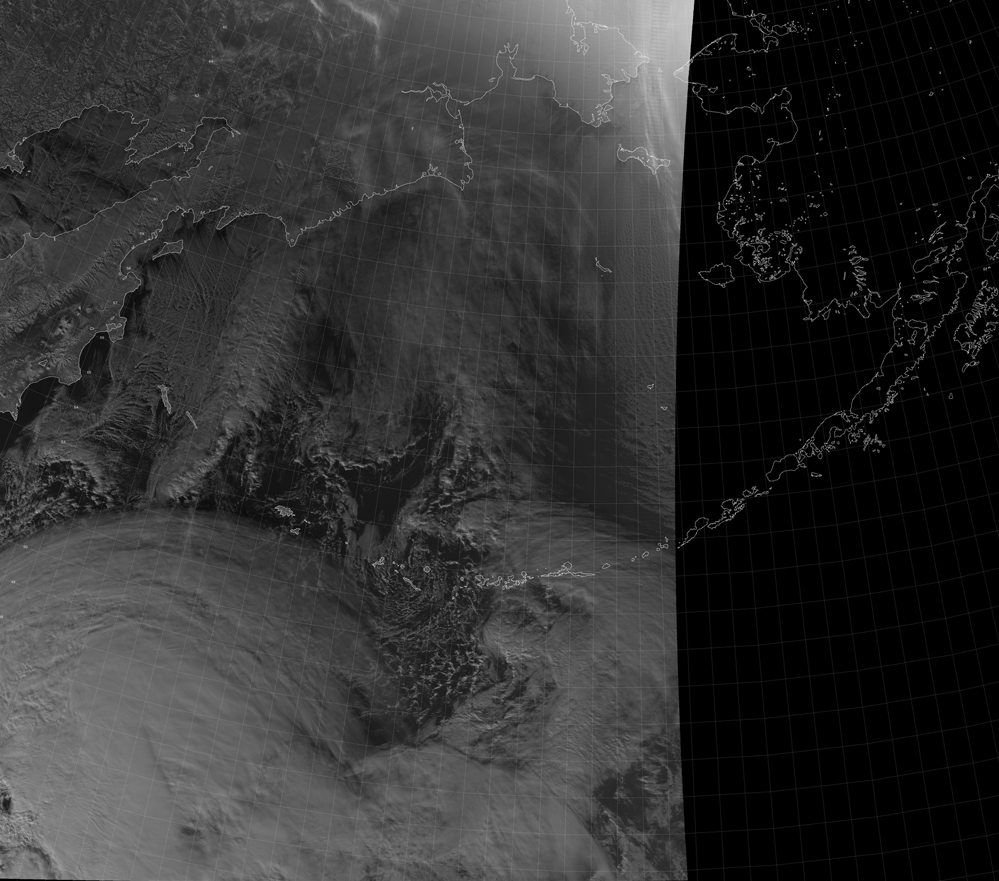
It’s almost like a geostationary satellite! (Not quite, as I’ll show later.) This is the view you get with just 4 images per day. (The further north you go, the more passes you get. The Interior of Alaska gets 6-8 passes, while the North Pole itself gets all 15.) Seeing the system wrap up into a symmetric circulation would be a thing of beauty, if it weren’t so destructive. Keep in mind that places like Adak are remote enough as it is. When a storm like this comes along, they are completely isolated from the rest of Alaska!
Here’s the same animation for the high-resolution longwave infrared (IR) band (I-5, 11.5 µm):
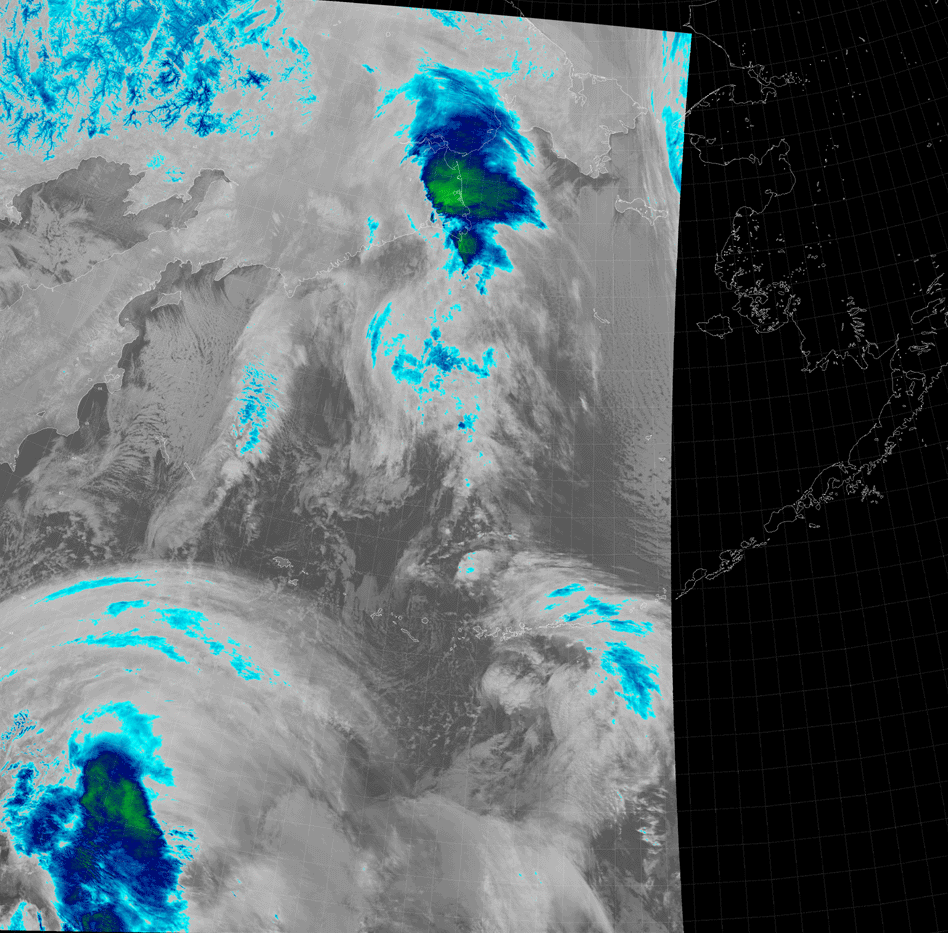
You may have heard of Himawari and its primary instrument, the Advanced Himawari Imager (AHI). AHI can be thought of as a geostationary version of VIIRS, and it’s nearly identical to what GOES-R will provide. Well, Himawari’s field of view includes the Aleutian Islands, and it takes images of the full disk every 10 minutes. Would you like to see how this storm evolved with 10 minute temporal resolution? Of course you would.
Here is CIRA’s Himawari Geocolor product for this storm:
Here is a loop of the full disk RGB Airmass product applied to Himawari. Look for the storm moving northeast from Japan and then rapidly wrapping up near the edge of the Earth. This is an example of something you can’t do with VIIRS, because VIIRS does not have any detectors sensitive to the 6-7 µm water vapor absorption band, which is one of the components of the RGB Airmass product. The RGB Airmass and Geocolor products are very popular with forecasters, but they’re too complicated to go into here. You can read up on the RGB Airmass product here, or visit my collegue D. Bikos’ blog to find out more about this storm and these products.
You might be asking how we know what the central pressure was in this storm. After all, there aren’t many weather observation sites in this part of the world. The truth is that it was estimated (in the same way the remnants of Typhoon Nuri were estimated) using the methodology outlined in this paper. I’d recommend reading that paper, since it’s how places like the Ocean Prediction Center at the National Weather Service estimate mid-latitude storm intensity when there are no surface observations. I’ll be using their terminology for the rest of this discussion.
Less than 1 week after the first HF storm hit the Aleutians, a second one hit. Unfortunately, this storm underwent rapid intensification in the ~12 hour period where there were no VIIRS passes. Here’s what Storm #2 looked like in the longwave IR according to Himawari. And here’s what it looked like at full maturity according to VIIRS:

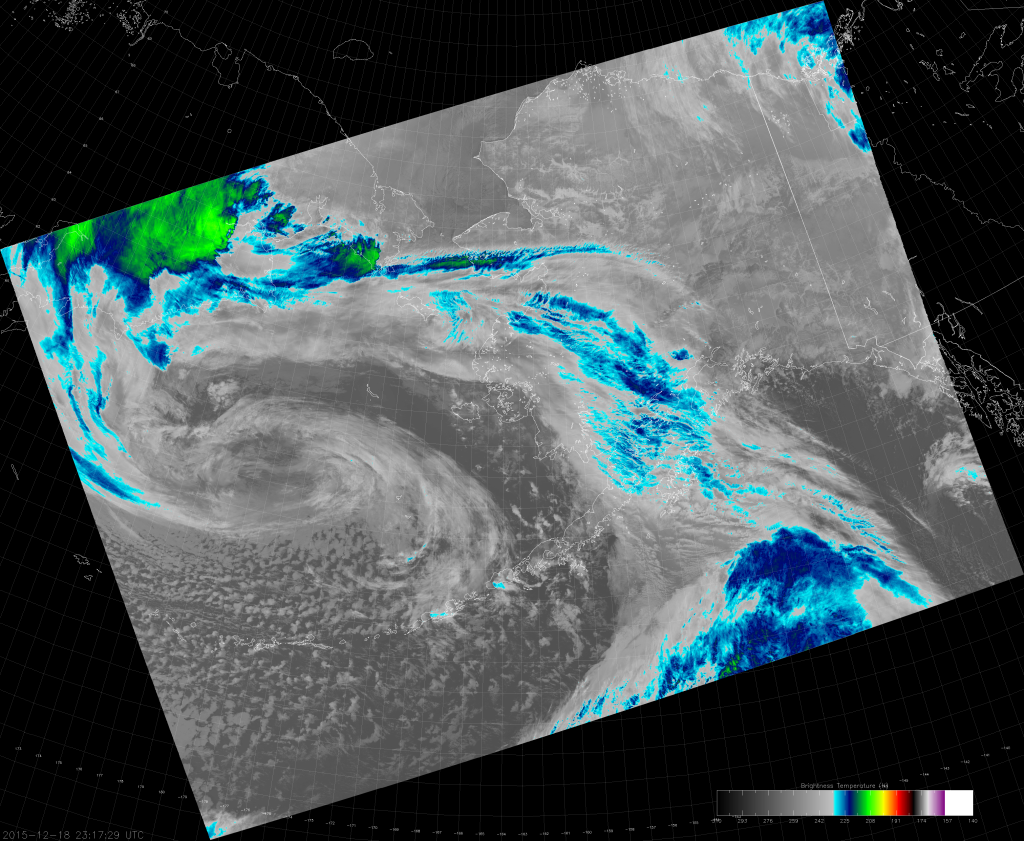
Notice that this storm is much more elongated than the first one. Winds with this one were only in the 60-80 mph range, making it a weak Category 1 HF low.
Storm #3 hit southwest Alaska just before New Year’s, right at the same time the Midwest was flooding. This one brought 90 mph winds, making it a strong Category 1 HF low. This one is bit difficult to identify in the Day/Night Band. I mean, how many different swirls can you see in this image?
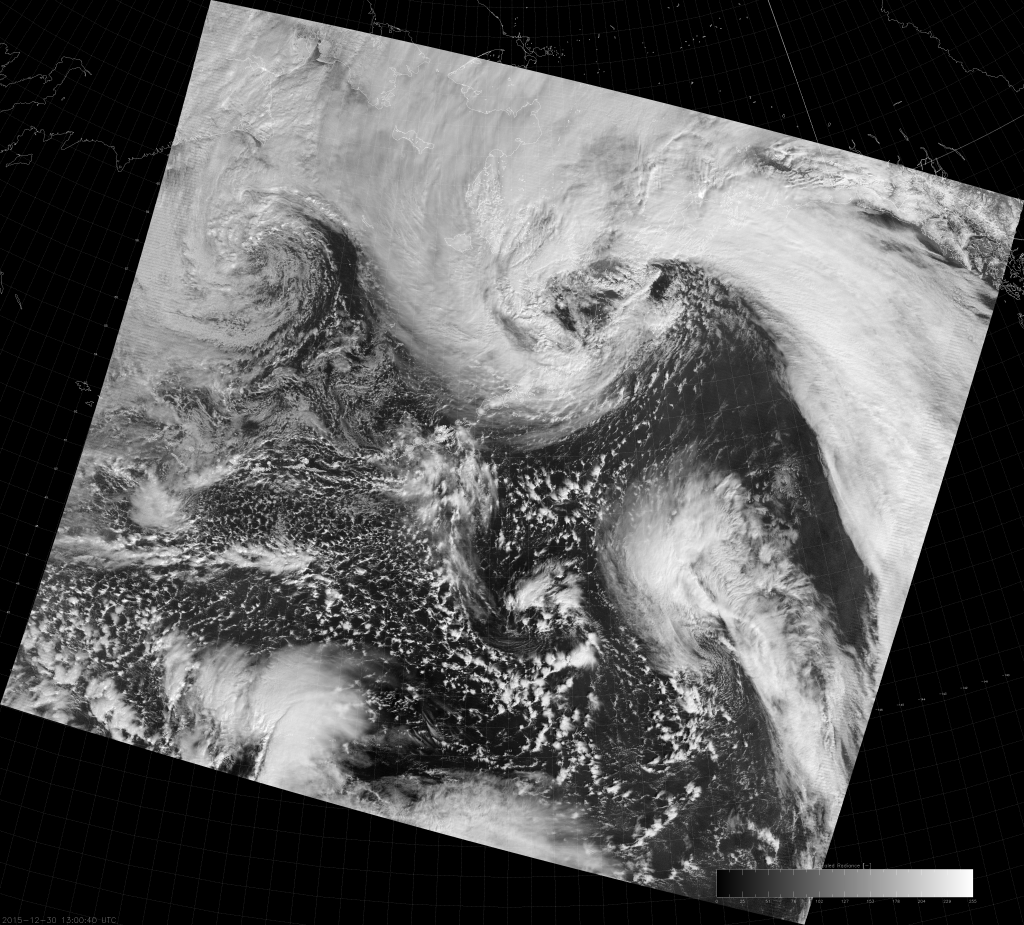
(NOTE: This was the only storm of the 4 to happen when there was moonlight available to the DNB, which is why the clouds appear so bright. The rest of the storms were illuminated by the sun during the short days and by airglow during the long nights.) The one to focus on is the one of the three big swirls closest to the center of the image (just above and right of center). It shows up a little better in the IR:
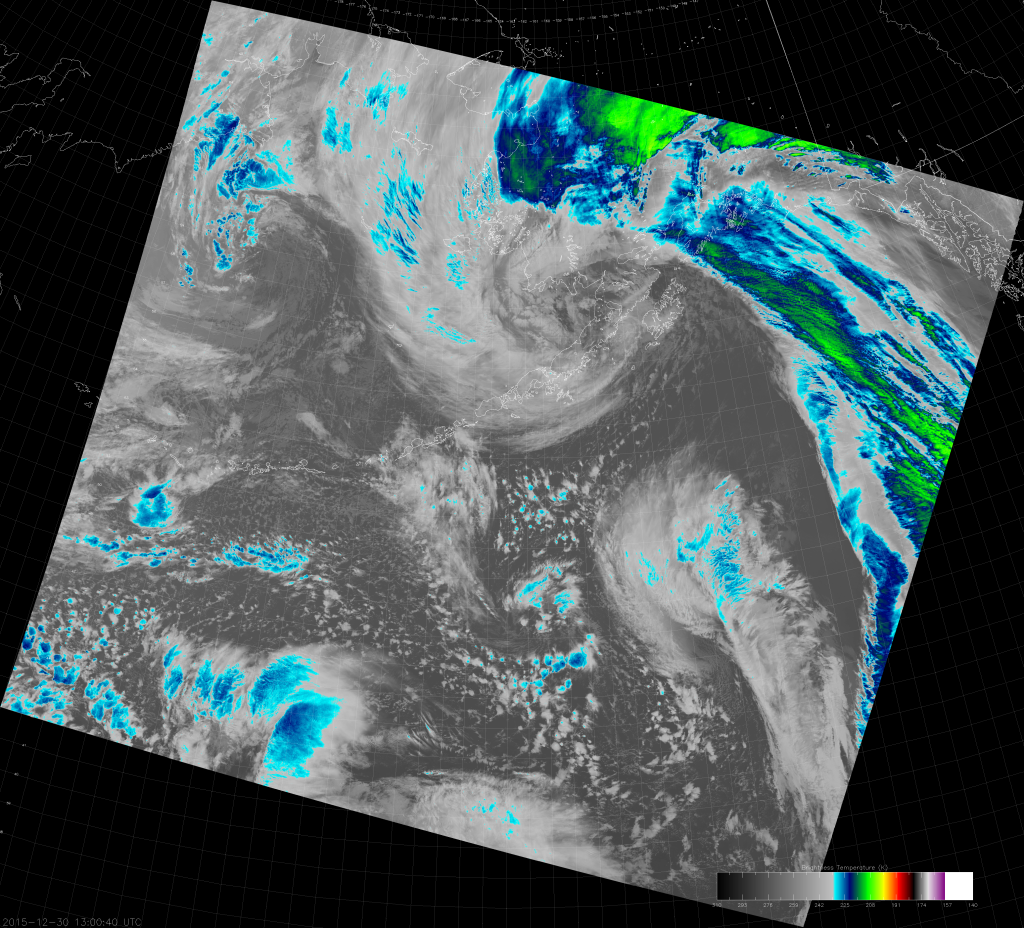
The colder (brighter/colored) cloud tops are the clue that this is the strongest storm, since all three have similar brightness (reflectivity) in the Day/Night Band. If you look close, you’ll also notice that this storm was peaking in intensity (reaching mature stage) right as it was making landfall along the southwest coast of Alaska.
Storm #4 hit the Aleutians on 6-7 January 2016 (one week later), and was another symmetric/circular circulation. This storm brought winds of 94 mph (2 mph short of Category 2!) The Ocean Prediction Center made this animation of its development as seen by the Himawari RGB Airmass product. Or, if you prefer the Geocolor view, here’s Storm #4 reaching mature stage. But, this is a VIIRS blog. So, what did VIIRS see? The same storm at higher spatial resolution and lower temporal resolution:

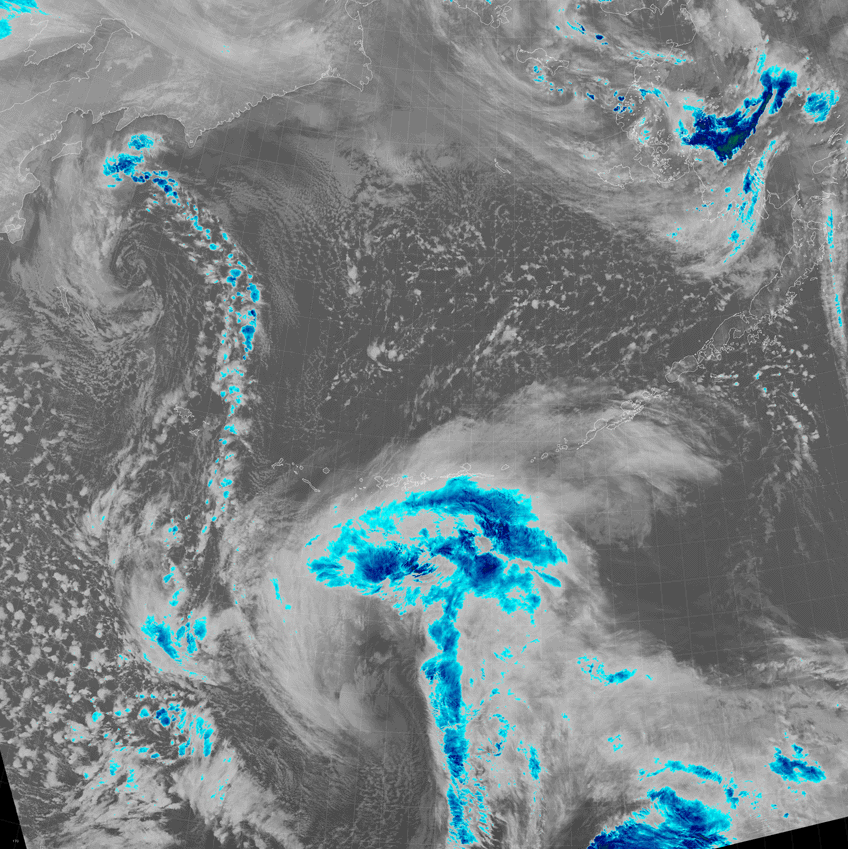
This storm elongated as it filled in and then retrograded to the west over Siberia. There aren’t many hurricanes that do that after heading northeast!
So, there you have it: 4 HF lows hitting Alaska in less than 1 month, with no reports of fatalities (that I could find) and only some structural damage. Think that would happen in Florida?
PS: I know this is a VIIRS blog, but if you want to look at CIRA’s Himawari data products, we have both full disk and North Pacific (including the Aleutians) sectors available in near real-time on this website.